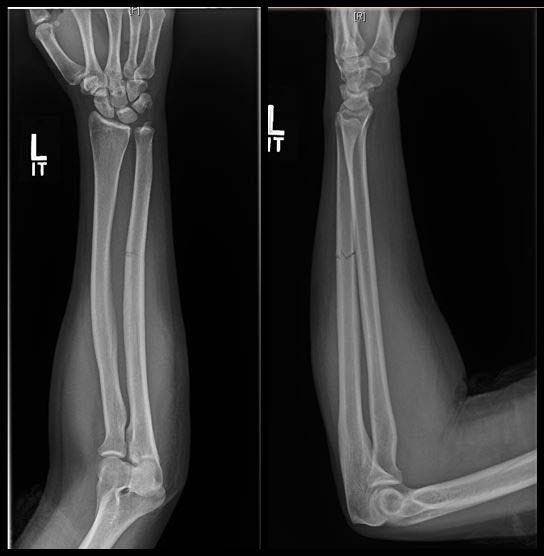Up to one third of adult women who sustain a non-displaced fracture of the forearm may be victims of domestic violence, according to a new study presented at the annual meeting of the Radiological Society of North America (RSNA).
The study works on two levels: first, it shows that that victims of domestic violence need to be screened for this type of damage, and secondly that patients who exhibit this type of damage may be victims — putting doctors in a position to potentially identify victims of domestic abuse.

Violence against women is a strikingly prevalent problem almost everywhere in the world. Global figures show that about 1 in 3 (35%) of women worldwide have experienced either physical or sexual intimate partner violence in their lifetime, with 38% of murders of women committed by a male intimate partner. To make matters even worse, the pandemic has exacerbated this problem, and violence against women seems to have increased due to the lockdowns.
Doctors are unfortunately becoming familiar with some signs of domestic violence. An experienced physician who analyzed many injuries in his career can identify suspicious signs in a fracture, at least in some cases. For instance, fractures to the ulna (the bone that runs on the pinkie finger side of the forearm) often occur when someone is trying to block a strong blow. It’s common in violent protests, when protesters are trying to block baton hits from the police.
Bharti Khurana, a radiologist at Brigham and Women’s Hospital in Boston and senior author of the study, has often seen ulnar fractures. Most often, they showed up in men. But occasionally, it was a woman — and these cases raised question marks. She didn’t know what to make of this, until she asked her colleagues. That’s when it all clicked.
“I would see these types of injuries in men, but once in a while I would see them in women,” Dr. Khurana said. “I never correlated it with intimate partner violence until recently. I shared my thoughts with our orthopedic surgeons and, with their interest and support, decided to pursue the study.”
Khurana and colleagues searched the electronic records of 6 hospitals, looking for isolated ulnar fractures of women aged 18-50. They identified 62 patients.
Out of these 62 patients, 12 were confirmed for intimate partner violence, and 8 others were also suspected of this type of violence. When they looked even further at these injuries, they found that one type of fracture was very common: a minimally displaced fracture. Confirmed cases were also correlated with homelessness and previous visits to the emergency departments for other types of injuries.
“The radiological characteristics we were looking at were the location of the fracture, the pattern of the fracture in terms of how it broke, and the displacement of the fracture,” said study lead author David Sing, M.D., an orthopedic surgery resident at Boston Medical Center. “Out of all those things, what we usually saw was a minimally displaced fracture, meaning the bone is broken all the way through but has not shifted significantly.”
This type of study is particularly important since victims of domestic violence are reluctant to report the crime, and often say the fracture is the result of a fall. This was also the case for the victims in this study: half reported a fall. But this type of ulnar fracture almost never happens when you fall.
“It’s actually rare to break your ulna in a fall,” Dr. Khurana said. “If a radiologist is seeing an ulnar fracture that is non-displaced, and the woman says she had a fall, it’s actually quite concerning for intimate partner violence.”
This potentially puts doctors in a unique position where they could raise suspicions about domestic violence. Doctors could, for instance, look for other signs of physical violence, or carry out detailed screenings with the patients.
“Careful analysis of previous imaging exams may also help radiologists confirm their suspicion of intimate partner violence,” said study co-author Rahul Gujrathi, M.D., a radiology fellow at Brigham and Women’s Hospital.
During the pandemic times, when money is scarce, spirits are down, and women are essentially trapped at home with their aggressors, this is more important than ever. It’s like identifying an underlying disease, the researchers note.
“The sooner we can address and change the behavior, the better,” Khurana said. “Just like radiologists want to diagnose cancer as early as possible, it’s the same thing with this. If we diagnose early, we have a better chance to break the cycle of violence.”
The study has not been published in a peer-reviewed journal at the time of this writing.






